CO-CREATE CHAROENKRUNG PRESENTS A NEW MODEL OF URBAN DEVELOPMENT CALLED “DESIGN THINKING,” WHICH ALLOWS FOR STAKEHOLDERS TO PLAY THE ROLE OF PROJECT DESIGNERS
“Riverside,” “walkway,” “landscape improvement,” these are the keywords commonly heard within the extensive and contemporary conversations of the people of Bangkok. Inescapably, they revolve around the debate over the 14-kilometer walkway along the Chao Phraya River, the issue on which King Mongkut’s Institute of Technology Ladkrabang recently conducted a second public hearing in the beginning of July. In the meantime, rarely discussed within the dialogue are projects such as “Co-Create Charoenkrung,” which actively integrates the participation of the local community as a part of its development. The sad fact is that something of this nature never makes it to national headlines, either because it is not controversial enough or perhaps gets overlooked due to the ineffective public relations of the project itself, particularly at such an early stage of the study. But, after two consecutive movements, specifically the talk Creating Cities: Co-Create Charoenkrung held in the middle of May and Co-create Test Day that followed later within that same month, the existence of “Co-Create Charoenkrung” has started to gain awareness and interest amongst the public.

Co-create Charoenkrung, Image © SHMA Architects
As somewhat of a continuum of Co-Create Test Day, a seminar ‘Decoding Charoenkrung, Creative District’ was organized to summarize the annual progress. Research and findings were presented in order to help people outside of the community learn more about the project and its ongoing operations. Held at the Grand Postal Building, the seminar featured the studies that have been conducted over the past year and presentation of a series of statistical data and feedback collected from the participants of Co-Create Test Day. The proposed information interestingly reflects the future developmental tendencies of the neighborhood. But before going on any further about the issue, we would like to give you a rough idea and introduction to the details and background of the project.
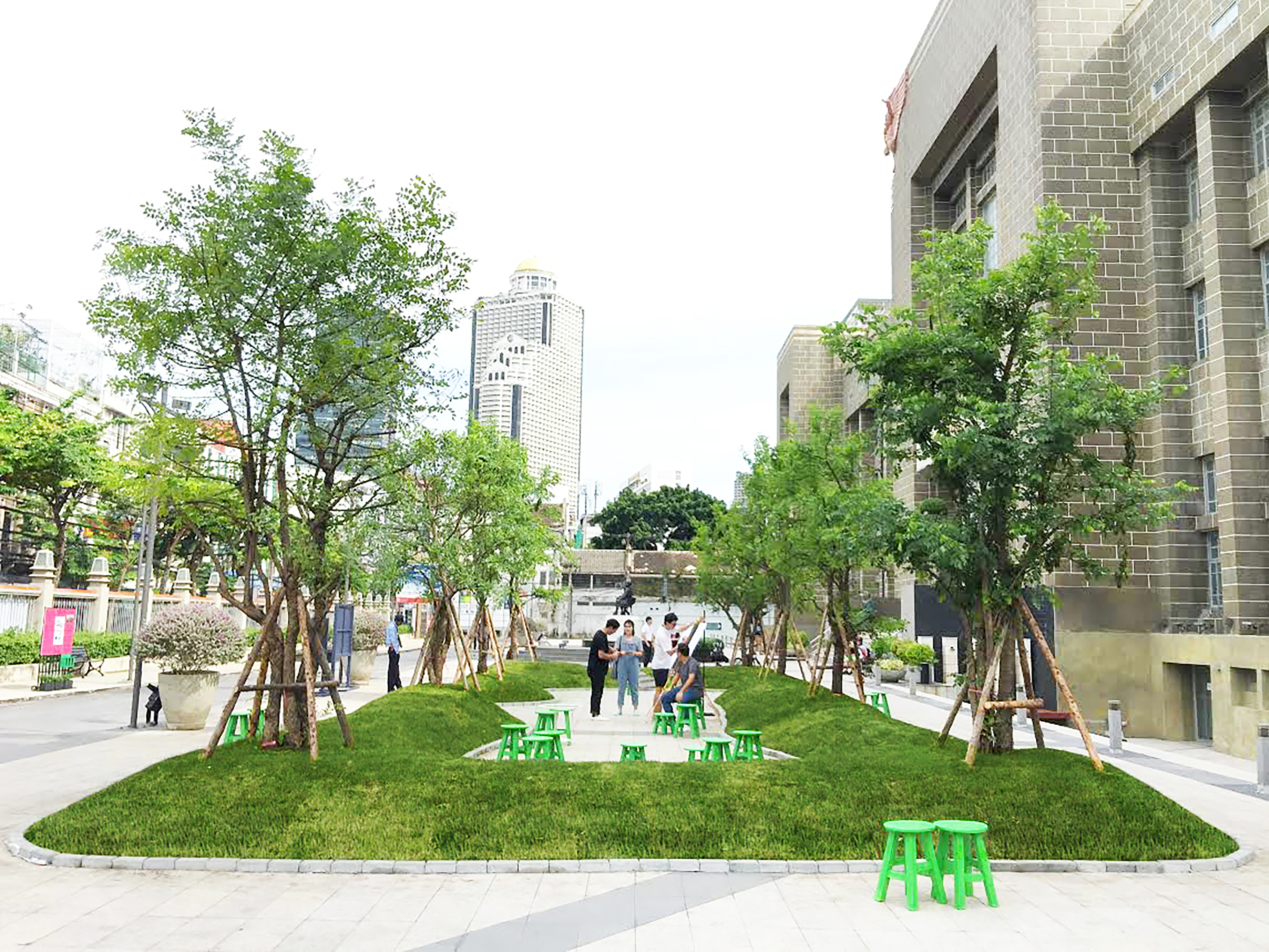
Co-create Charoenkrung, Image © SHMA Architects
The working committee of Co-Create Charoenkrung is comprised of the Thailand Creative & Design Center (TCDC), the Faculty of Architecture and Urban Planning of Thammasat University, and Shma Soen Company Limited. The project encompasses the 2.8-square-kilometer area spanning from Taksin Bridge to Sri Praya Pier and is driven by an attempt to develop Charoenkrung, one of Bangkok’s most vibrant and historically important neighborhoods, into a ‘Creative District’ (where everyone can be creative). With TDCD and its new policies that aim to expand its role as a Design Center into the hub of this creative district behind the development, one of the goals of the project is to increase the city’s overall economic capabilities. ‘Co-Create Charoenkrung’ greatly emphasizes the integration of public opinion and participation through a ‘Design Thinking’ approach, which divides the process into three main stages: determining the stakeholders, organizing workshops to gather opinions and summarizing the key points. The realized contents will be used as data to form the developmental strategy for the district with Shma Soen Company Limited being assigned to handle said task.
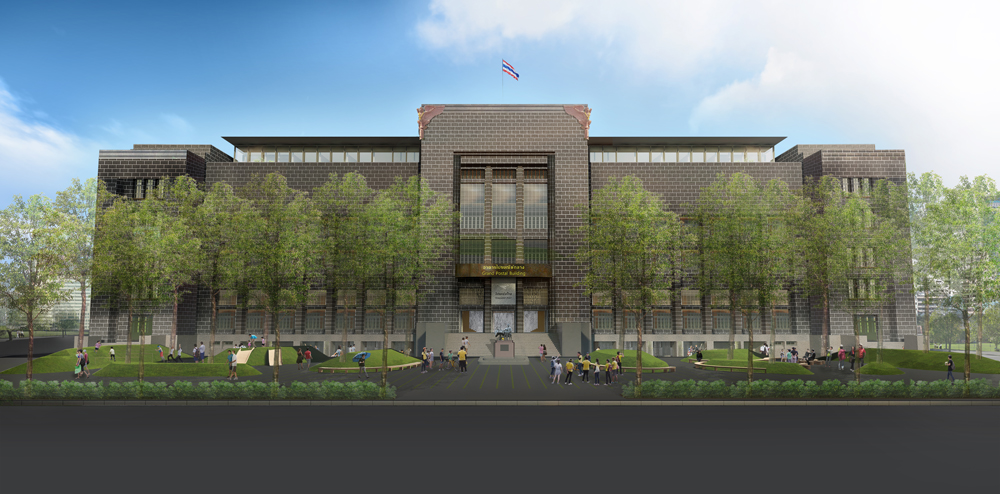
Co-create Charoenkrung, Image © SHMA Architects
The three strategies, REVIVAL, RELINK and REBRAND, are ramified into 6 projects with 4 of them having been chosen as pilot projects: public space development (riverside areas and green spaces), connectivity of local streets and alleyways, refurbishment of deserted buildings and development of the Charoenkrung bus service system. For this stage, the working committee invited the stakeholders to co-create a model where the program and nature of the project are indicated to best suit the locals’ demands for the space. Shma Soen later developed the findings and tested how each program worked by creating 1:1 mockups on the actual sites, providing a rough image of what the project would look like. The approach also helps to explore feedback and gather additional opinions from the participants for further development. The aforementioned topics were concluded in the seminar, providing a big picture of what ‘Co-Create Charoenkrung’ is actually all about. We will now go back and discuss the ongoing issues that exist beyond the positive/negative repercussions presented on the stage at the seminar.
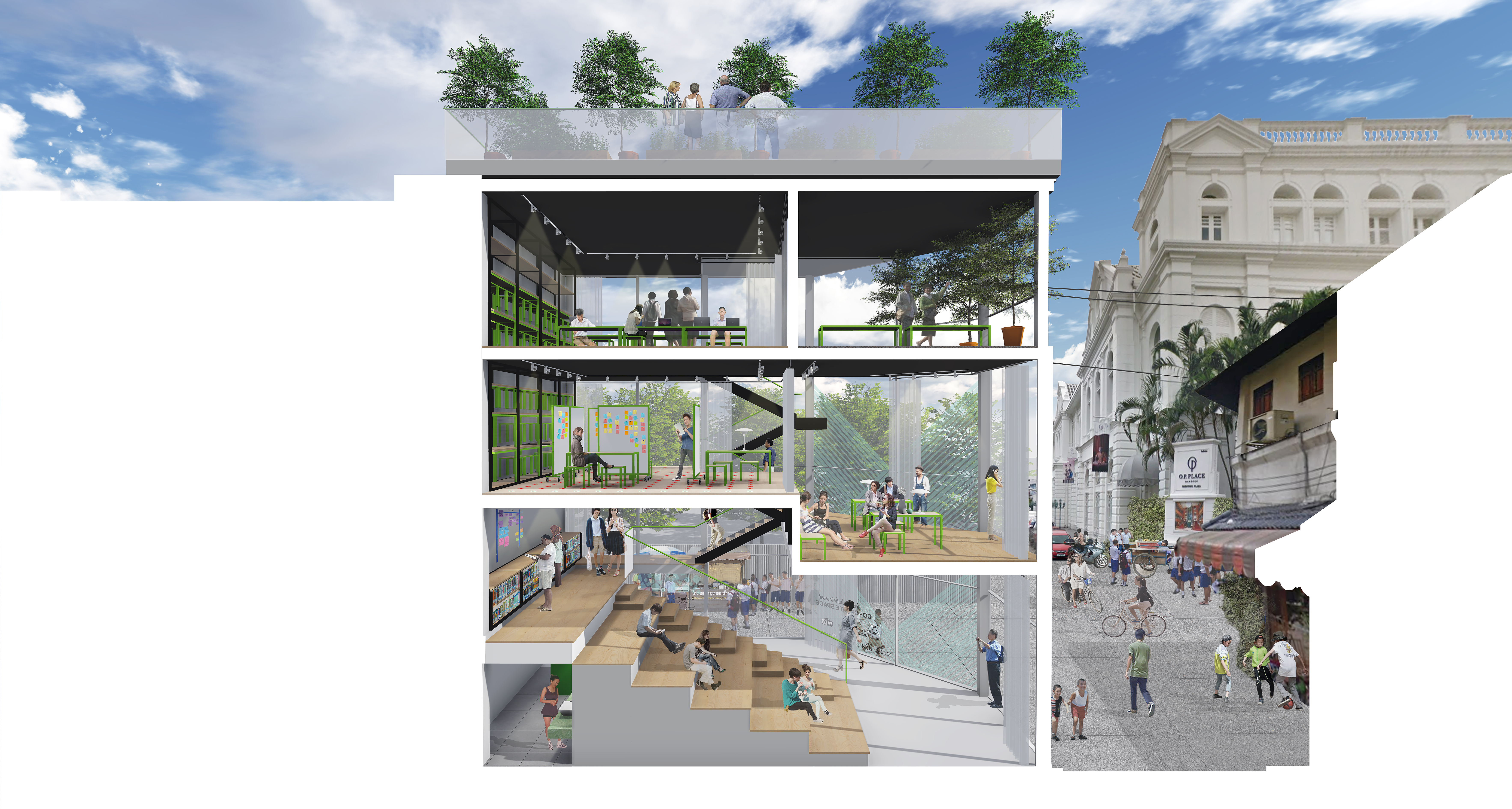
Co-create Charoenkrung, Image © SHMA Architects
For each activity held on Co-Create Test Day, two small cutouts were given to two groups of participants (locals and outsiders). Each participant was asked to write down his/her views and feelings on a sticker that was later placed on the cutouts. The cutouts, therefore, became a space for people to express their opinions about the project and helped to count the number of participants at the same time. What we found interesting was the proportion between locals and outsiders, in which the latter outnumbered the first group.
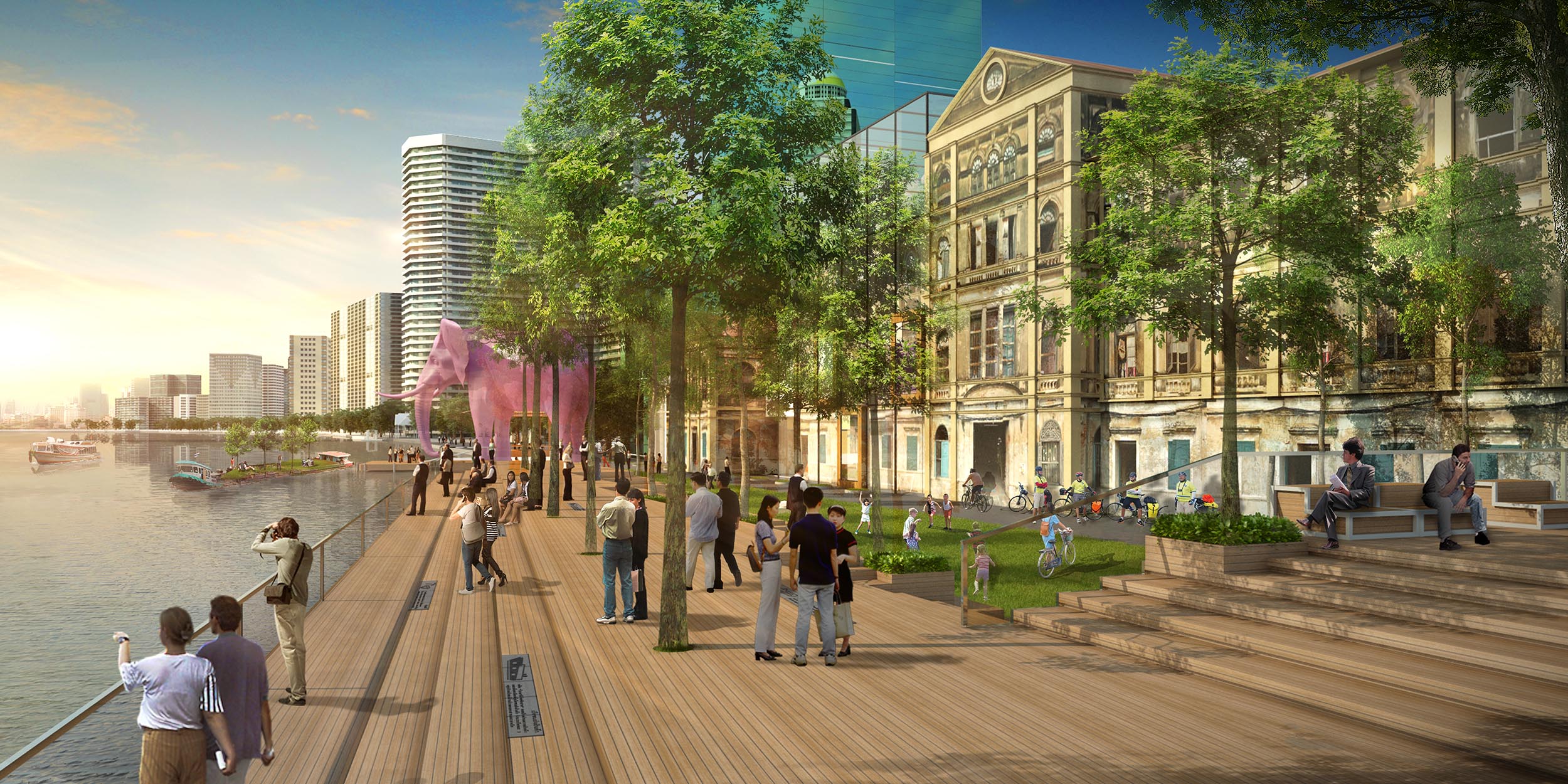
Co-create Charoenkrung, Image © SHMA Architects
What does this statistic reflect? The first undeniable fact for the working committee is the challenge it has to go through in promoting and inviting the locals to be a part of the design process, especially when the term ‘creative district’ is still fairly new to Thai society. Understandably, the locals cannot see what the concept will grow to become and the benefits it will bring. Secondly, attention is drawn to the complexity of the ‘user groups,’ which cannot be easily categorized as simply ‘insiders’ and ‘outsiders.’ The reality is that users who fall into the ‘insiders’ category can be subdivided into a group of ‘quasi-insiders’ such as owners of shops and buildings in the area. Seemingly, this group of people appears to be spending their lives in the area, but actually possess behaviors that bear no difference from office workers who use a space during normal office hours and do not really live in the neighborhood. Another group of users is fewer in number and consists of the locals who reside in the area permanently but have only few interactions with the neighborhood. These factors explain why the area seems ‘deserted’ during the time when shops and offices are closed (despite the fact that there are people living in the buildings), which resulted in the number and proportion of participants in Co-Create Test Day that we saw in the survey.

Co-create Charoenkrung, Image © SHMA Architects
The next issue we all have to pay attention to is the roles of owners of the deserted lands and buildings in the area. This is because if the project were successful and able to progress under the three proposed strategies, the developments such as improved connectivity of local streets and alleyways, revival of the riverside area, creation of a local transport system and refurbishment of deserted buildings into co-working spaces would likely follow. These changes would not be all that different from most infrastructure developments whose main goal is to prep the area for the future. In the case of Charoenkrung, the neighborhood shows the promising tendency of growing economic potential due to the new group of consumers that will follow the coming of TCDC (members of TCDC’s library are among them). When that time comes, such development could turn into a double-edged sword, mainly because there are no other conditions besides TCDC’s new role and contributions that could guarantee the area’s future development into the ‘creative district,’ of which many expect it to become. And for that matter, the three major landowners in the area, be they The Crown Property Bureau, real-estate developers or private owners, will be the key players who can determine whether Chanroenkrung will become the ‘creative district’ we all hope for or a neighborhood that welcomes the second branch of Asiatique and five star riverside hotels that reserve their open-arms for foreigners only as they remain to keep the riverside area free from public access. This is not at all a paranoia or pessimism. Look no further than Charoen Nakhon that will soon welcome more skyscrapers, a 4,000-square-meter theme park, another franchised Cineplex and a Japanese shopping mall. It’s all happening, just across the river. And there is always the possibility that these investors are queuing up to get on a ferry to Charoenkrung with ideas for their second branch in mind.

Co-create Charoenkrung, Image © SHMA Architects
Looking from this side of the spectrum, there seems to be a trap on the road to development. Call it capitalism or any other given name, what is obvious here is that this is a dilemma that can be resolved by the helping hand of the government. The implementation of policies that support SME can stimulate the birth and development of local entrepreneurs who are the key factors that will keep Charoenkrung from becoming another commercialized district invaded by corporate investors who prevent people’s access to the public spaces they deserve. At the end of the day, the final image of “Co-Create Charoenkrung” may not be as important as the process itself. The “Design Thinking” approach does not aim to grant the working committee justification or use people as a shield (to prove that the project is conceived by the people and for the people), but to stimulate a ‘sense of ownership’ among the locals, for them to possess an awareness that can foster and develop their neighborhood over the long run, as well as facilitate appreciation for their own potential and contributions to the area. Charoenkrung may not have to become the full-on creative district we see in foreign countries, but at the very least, the locals should be able to act as the key force behind the future development and direction of the neighborhood, reinforcing its identity that forces big investors to adjust themselves to suit its local characteristics and not vice versa.
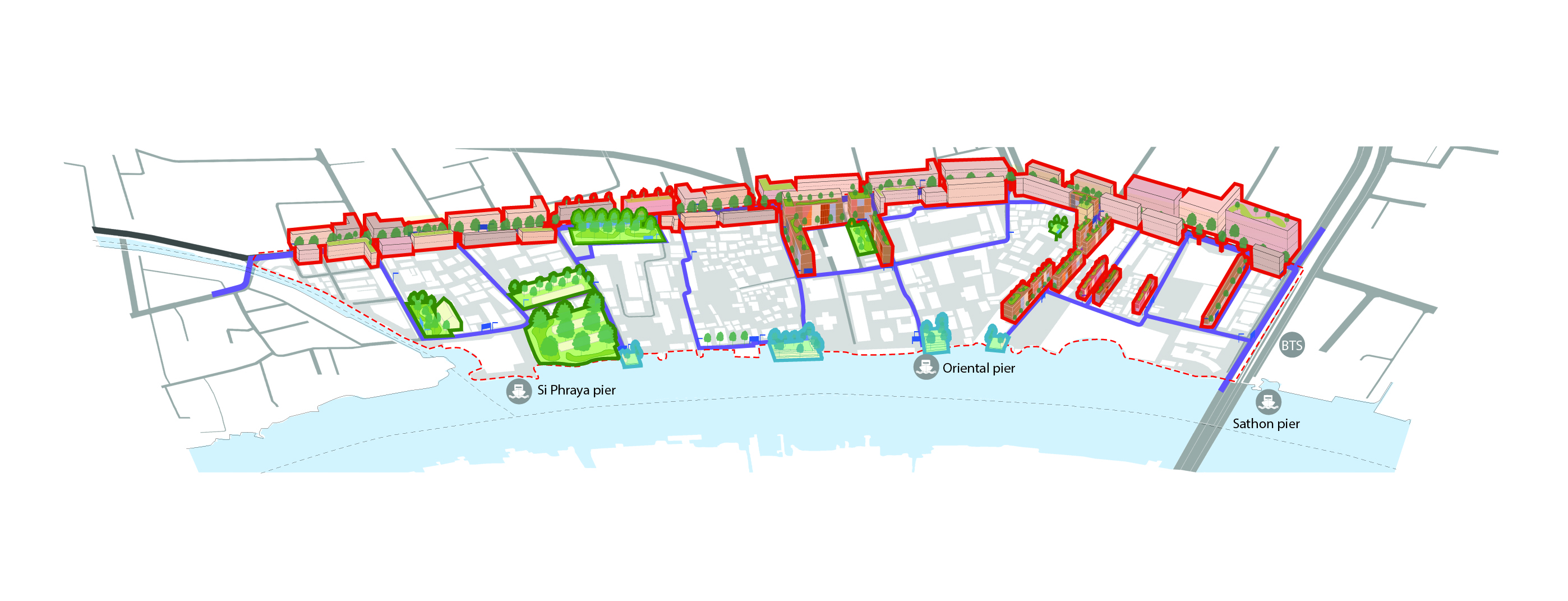
Co-create Charoenkrung, Image © SHMA Architects
TEXT: NAPAT CHARITBUTRA
www.facebook.com/CoCreateCharoenkrung
www.tcdc.or.th

